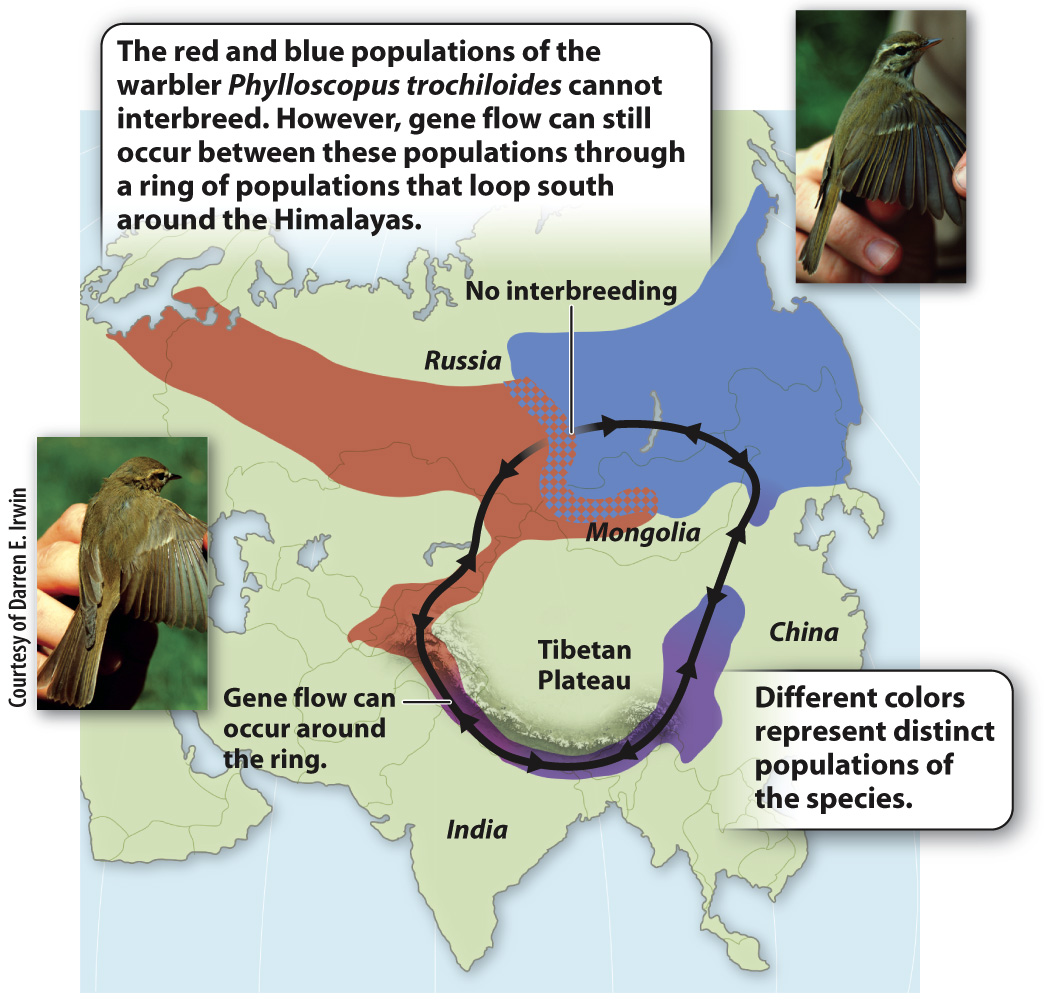Ring species and hybridization complicate the BSC.
An unusual but interesting geographic pattern shown by ring species, species with populations that are reproductively but not genetically isolated, highlights another shortcoming of the BSC. Here, we find that some populations within a species are reproductively isolated from each other, but others are not.
For example, populations of the greenish warbler, Phylloscopus trochiloides, are distributed in a large geographic loop around the Himalayas (Fig. 22.4). In Russia to the north, members of two neighboring populations do not interbreed. Therefore, according to the BSC, they are different species. However, the more western of the two Russian populations is capable of reproducing with the population to the south of it, and that population is capable of reproducing with the population to the east of it, and so on. Eventually, the loop of genetically exchanging populations comes all the way round to the more eastern of the two Russian populations. Thus, though members of the two Russian populations cannot exchange genes directly, they can do so indirectly, with the genetic material passing through many intermediate populations. This situation is more complicated than anything predicted by the BSC. The two Russian populations are reproductively isolated from each other but they are not genetically isolated from each other because of gene flow around the ring.

We also see a complicated situation in some groups of closely related species of plants. Despite apparently being good morphospecies that can be distinguished by appearance alone, many different species of willow (Salix), oak (Quercus), and dandelion (Taraxacum) are still capable of exchanging genes with other species in their genera through hybridization, or interbreeding, between species. By the BSC, these different forms should be considered one large species because they are able to reproduce and produce fertile offspring. However, because they maintain their distinct appearances, natural selection must work against the hybrid offspring.
This unusual phenomenon seems to occur mainly in plants, but, with the application of powerful comparative genomic approaches, we are discovering that the boundaries between closely related animal species are also not as strictly drawn as traditionally supposed. As we will see in Chapter 24, for example, we now know that our own species, Homo sapiens, interbred in the past with another species, Homo neanderthalensis.